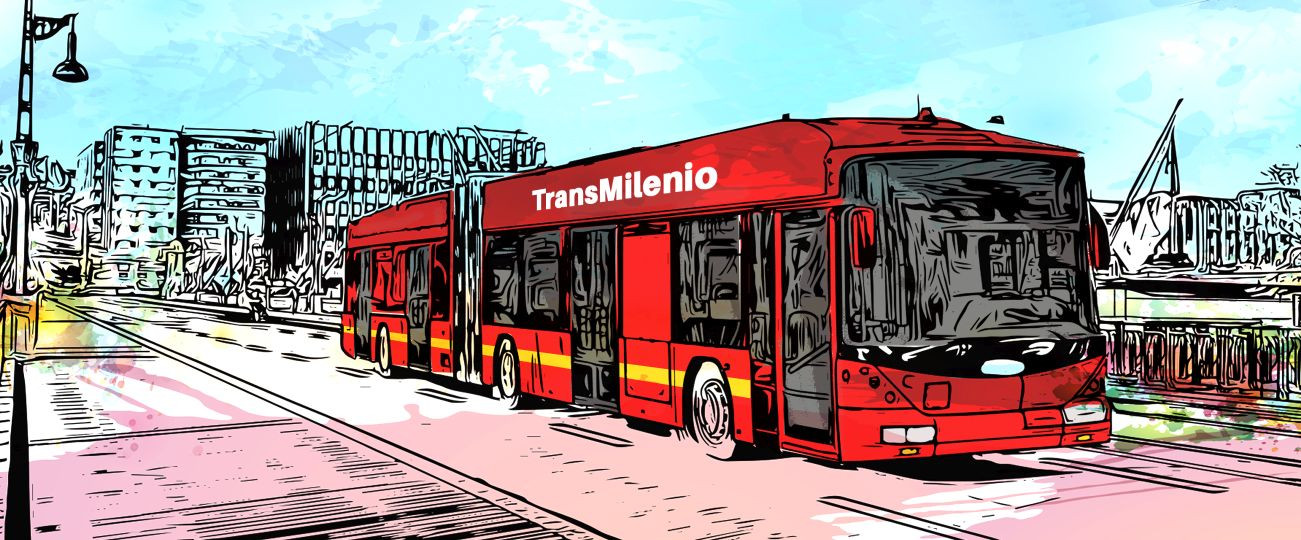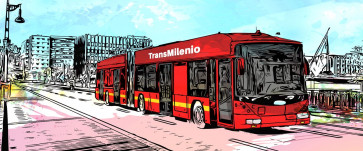Popular Reads
Top Results
Can't find what you're looking for?
View all search resultsPopular Reads
Top Results
Can't find what you're looking for?
View all search results
- Fri, July 21, 2023
Change text size
Gift Premium Articles
to Anyone
Work It Right is a weekly column that provides practical and insightful advice on the complexities of urban transportation.
What was your first thought when you heard about cities in Latin America? Drugs, thugs, Pablo Escobar, slums? When I told my family and colleagues I would visit Bogotá, Colombia, for a business trip, those words and worries were the first things that came up. In contrast, I was quite excited because I would visit the city with a high quality, high capacity modern bus system and the most extended bike lane network in the world, serving its 10 million residents daily.
Every year, transportation experts worldwide gather at MOBILIZE Summit – an annual sustainable transportation event organized by the Institute for Transportation and Development Policy (ITDP). Long overdue because of COVID-19, the event was officially back to its original concept, being held in cities that won the Sustainable Transport Award (STA). This year, MOBILIZE Summit was held in Bogotá, Colombia as the winner of 2022’s STA. This is the second win for Bogotá since its first win back in 2005. Every year the STA committee from 11 organizations working in the urban mobility sector choose the winner from the cities registered on the STA website. The winning city is selected based on its efforts to build and elevate a sustainable transportation system, such as interventions in public transportation, cycling and walking facilities and their impact on the people. After going through two stages of the selection process, the winner is selected.
Transmilenio: BRT that Inspired TransJakarta
This year, I had the opportunity to attend the MOBILIZE Summit in Bogotá and try the Transmilenio, Bogotá’s legendary bus rapid transit (BRT) system, the world’s high quality, high-capacity modern bus system. To see the Transmilenio’s red buses themselves, not only from the guideline books and reports, was quite a dream come true moment for me.
My first impression of the system was like looking at TransJakarta’s infrastructure in its early years, it is not without reason. Transmilenio was the inspiration for TransJakarta’s development in early 2004, from its access to its fleets. In 2004, then Jakarta governor Sutiyoso, came to Colombia to see one of the Transmilenio transportation facilities, and in the end, it was adopted as TransJakarta. But the effectiveness of the system was beyond. The bus lanes mostly have overtaking lanes, so the buses can serve more routes in every station without lining up and waiting for the first bus to board its passengers. The bus lanes are never empty, and the frequency of bus arrivals is very high, even during off-peak hours.
BRT Transmilenio was completed in 2000 with 41 kilometers of bus lanes. By 2010, the bus system had transported more than 3 billion passengers and reduced carbon emissions so significantly it was recognized by the United Nations as a Clean Development Mechanism (CDM). The city did not just stop there; it expanded the Transmilenio by creating the Integrated Public Transport System (SITP), bringing informal operations into an integrated formal system managed by Transmilenio. This includes the opening of the cable car system, which is an effective mode of transportation for the people of Bogotá with its hilly city contour. The BRT is integrated with the cable car both physically and through the fare scheme; the station has direct access to-and-from the BRT and cable car and vice versa. Passengers are only charged one fare when changing modes (from BRT to the cable car and vice versa) and the integration station is also equipped with a secure bicycle parking space inside the station.
Pro-bike policies and politicians
Although the city has experimented with cycling many decades before, the second win of Bogotá of the STA was for its expansive cycle lane infrastructure networks where they added more lanes during the COVID-19 pandemic, making it the world's most extensive cycle lane network, with 593 km in total. The city also has one of the highest cycling rates in Latin America.
I experienced the bike lanes first-hand; bike lanes in Bogotá have many typologies, from those integrated with the sidewalk, using separators, passing under the flyover to the bike lane on the median road. These various typologies are the legacy of a series of Bogotá leaders in each of their tenures and have become a relay program from one mayor to another. One thing is for sure, all the mayors of Bogotá have the same vision on how to accommodate and provide options for mobility for the people by utilizing the bike lanes to help the daily mobility of 900 thousand residents and more.
The bike lane development began in 1974, when Bogotá introduced Ciclovía, an event like Car Free Day (CFD) here in Jakarta, making it the first city in South America and one of the first in the world to introduce the concept. The closing of traffic every Sunday is used for pedestrians and cyclists then adopted in 1976. The event has grown to 120 km of open streets for over 1.5 million people and cyclists each week in 2022.
The first cycling network, the Red de Ciclorrutas, was developed in 1998 at 8 km long. Two years later, the bike lane grew to 240 km. The city again did not stop there, they integrated the bike lane with the BRT system to the extent of changing the Colombia traffic code, expanding the rights of cyclists to ride on a whole traffic lane and making it legal to ride in groups. Cycling trips in Bogotá are now estimated at 8 percent of all trips, or about 900,000 daily trips.
In 2022, Bogotá launched its first bikeshare system and now has 3,300 bicycles and 300 stations near public transportation stations. The fare system is integrated with the Transmilenio card. Within six months of operation, the bikeshare system, with Tembici as the operator, achieved 420 thousand trips during Coldplay’s concert.
***
The author is a senior communications and partnership manager at the Institute for Transportation and Development Policy (ITDP).
Have a question about urban transportation? Send it to wir@thejakartapost.com with your name and current location (anonymous submissions will also be considered). Please note that The Jakarta Post reserves the right to edit your letters for publication.









